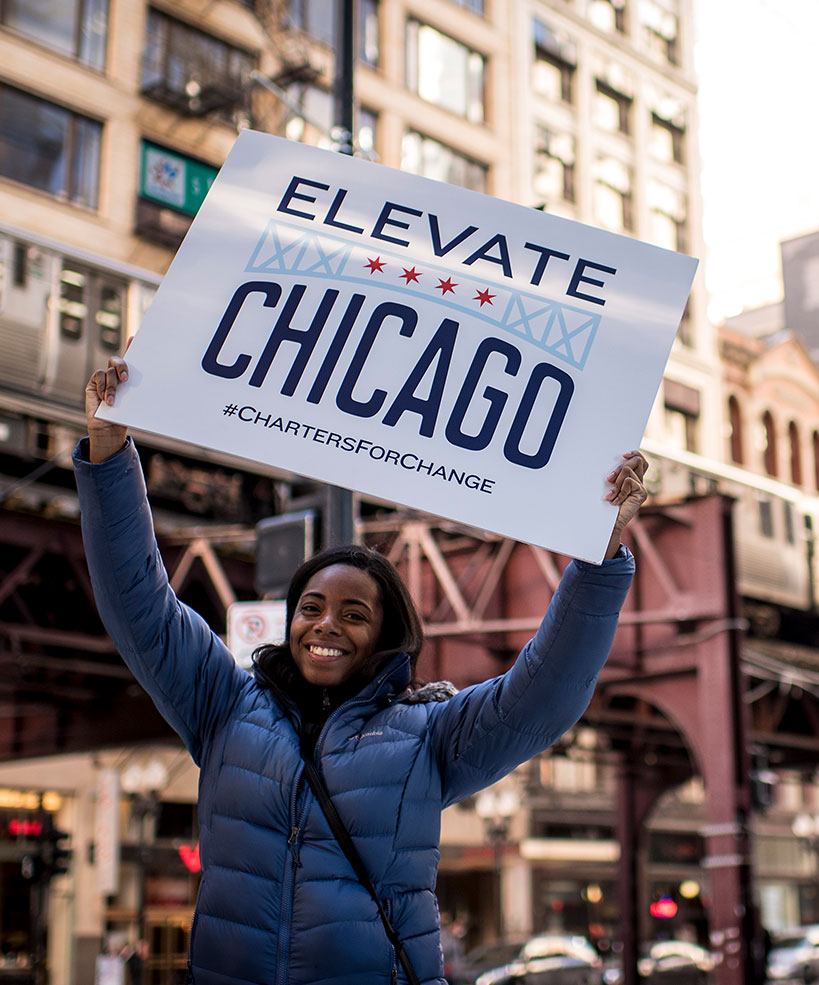
Top Education Stories You Don’t Want to Miss: November 14 – November 20, 2020
CPS to bring back elementary students Feb. 1
By Nader Issa for The Chicago Sun-Times
“In the most concrete move yet to restart traditional schooling after what will have been an unprecedented, nearly yearlong interruption, Chicago Public Schools officials are planning to resume in-person classes for preschoolers and some special education students in January and all elementary school students at the start of February, the district announced Tuesday. Employing a phased-in return that initially was expected as soon as November, the district said it plans to bring back preschool students and children in special education cluster programs Jan. 11 for daily instruction, and all other kindergarten through eighth grade students Feb. 1 for part-time classroom, part-time remote learning. Pre-K and cluster staff will go back to work Jan. 4, and elementary school teachers will return Jan. 25. High school students will continue remote learning, and the district will consider whether to bring them back later in the spring.”
CPS plans to regularly test staff for COVID-19 after schools reopen
By Nader Issa for The Chicago Sun-Times
“Chicago officials are developing a plan to regularly test public school teachers and staff once they return to classrooms early next year, an effort that could begin to ease the minds of anxious workers and move the school system a step closer to reopening for the first time during the pandemic. Rapid, 15-minute tests supplied by the federal government will be used to assess asymptomatic school staffers who are in regular contact with students, the Chicago Department of Public Health and Chicago Public Schools said Wednesday. Workers who don’t see students won’t receive the tests. The tests can be self-administered with the supervision of trained staff, and the swabs only have to be placed halfway up the nose. If an adult tests positive, they’ll be isolated and sent home to quarantine while a contact tracing team from CDPH investigates, officials said.”
CPS students getting more A’s — but also more F’s as remote learning continues
By Nader Issa for The Chicago Sun-Times
“Racial gaps in the rates at which failing grades are handed out to Chicago Public Schools students have widened this school year even as children across the board have received both more A’s and more F’s than they had this time last year, according to new data released by the school system Wednesday. CPS officials, who are typically keen to avoid publicizing data that would embarrass the district or show a lack of student progress, used their findings to highlight the growing inequities caused by remote learning as they make their case for reopening schools during the pandemic. In general, educators have said Black and Latino students, children in special education and those who are homeless and come from low-income backgrounds have had the most barriers to success without in-person learning because of systemic failures such as poor access to computers and internet, an inability to remotely support kids with disabilities and a lack of face-to-face interaction with teachers. Middle-class families, generally speaking, have been more likely to have access to the resources needed to make remote learning viable.”
Chicago’s steep enrollment losses hit high-poverty schools hardest
By Mila Koumpilova and Sam Park for Chalkbeat
“This fall’s enrollment drop in Chicago’s public schools — the sharpest in two decades — hit Bret Harte Elementary particularly hard. The school, near the wealthy University of Chicago but serving primarily low-income South Side students, lost about 50 students. For a small school, with enrollment hovering at about 330 students in recent years, it was a painful 15% drop. Right before the coronavirus pandemic hit, Harte had revived its fundraising group to help hire a music teacher and plug other program holes. Now, the school could face a fresh financial setback. A Chalkbeat analysis of this fall’s enrollment data shows that the schools with the most marked declines were often the ones least able to handle a potential financial hit from an enrollment dip. Many were small neighborhood elementary schools with 350 students or fewer, such as Harte, which are already in a precarious position in a school district that bases annual school budgets largely on the number of students enrolled.”
